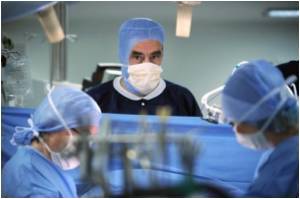In a recent study completed at the University of Eastern Finland, new methods that enhance the quality of myocardial perfusion imaging were developed.

Coronary artery disease is the most common cause of death in the world, and a major cause of hospitalisation. Myocardial perfusion imaging (MPI), which is used to assess the sufficiency of myocardial blood flow, is an important tool in the diagnostics of coronary artery disease and in determining its severity. The scan is usually performed in two phases involving a stress myocardial perfusion imaging scan and a rest myocardial perfusion imaging scan. The patient is given an injection of a radioactive substance, which gets absorbed in those parts of the heart muscle that have normal blood flow. The scan is performed by using a gamma camera which detects radiation coming from the patient.
The quality of images obtained by MPI are dependent on a variety of factors, the most significant ones being image noise, photon attenuation, Compton scattering, collimator-detector response (CDR), and patient movement. Problems in image quality resulting from the above factors can be corrected by means of reconstruction-based compensation methods, but this is not always straightforward.
The study focused on the testing of methods which seek to reduce the imaging time and to correct image problems caused by a long imaging time. The possibility to shorten the imaging time makes the scan easier for the patient and makes it possible to scan a larger number of patients during one day. The study investigated the possibilities to shorten the imaging time by using collimator response compensation and by performing the stress/rest MPI scans simultaneously by using different radionuclides.
In gamma imaging, a collimator is needed to convey the radiation coming from the patient in the desired direction; however, the use of a collimator also impairs image quality. Collimator response compensation was found to improve the quality of MPI so significantly that it was possible to reduce the imaging time by half while still obtaining the same image quality as with traditional computational methods and full imaging time. Furthermore, a new method for reducing errors associated with collimator response compensation was invented. The study established that it is possible to combine the stress and rest MPI scans, but this requires the use of accurate scattering compensation methods in order to compensate for the cross-scattering of different radionuclides.
For many patients, even the shortened imaging time is too long and they tend to move during the scan. The study also developed and tested two motion correction methods. The methods were successful in correcting even major errors caused by patient movement, and they resulted in error-free MPI images.
Advertisement
The results were originally published in Nuclear Medicine Communications, International Journal of Molecular Imaging, and Annals of Nuclear Medicine.
Advertisement










